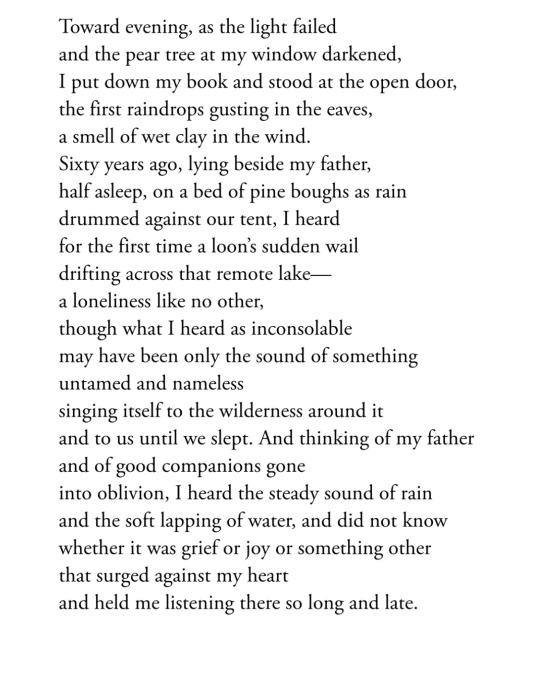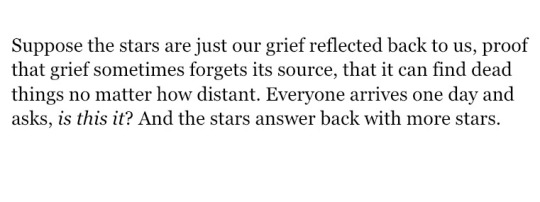Text
“In an early 1970s interview conducted by his friend Irv Broughton, whose Mill Mountain Press published six books of Stanford’s poetry, Stanford recalled that period of his life: “I remember relating time and dust and weather and stars and speech as if it all were a constellation that came out every night. To me it is another world.”
23 notes
·
View notes
Text
Some days I am small beyond measure. Some days I am the fence the field the trees.
Joanna Klink
23 notes
·
View notes
Text
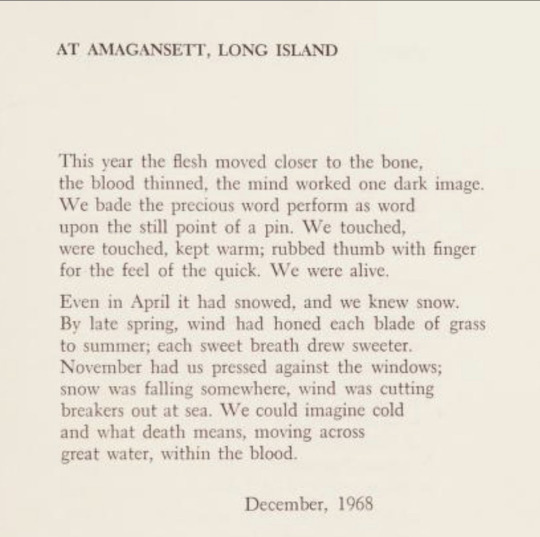
Stanley Plumly
3 notes
·
View notes
Text
“I get teased a lot for all the birds in my songs,” laughs Beam. “People who know me say “where’s the fucking bird in this one?” I like to think of it in the context that Cézanne painted a lot of oranges and Monet painted a lot of ponds. There are certain images that we return to because we find them inspiring and that’s OK. It has a lot to do with how I see the world, where I grew up and where I live now. It also has to do with how I like to live my life. I guess it’s possible to use one too many birds but as long as you use it in a way that feels new then I’m fine with it.”
Sam Beam
6 notes
·
View notes
Text

Peter Everwine, “The Day” from New Letters, (Vol 83, no. 1, 2016-17)
5 notes
·
View notes
Text
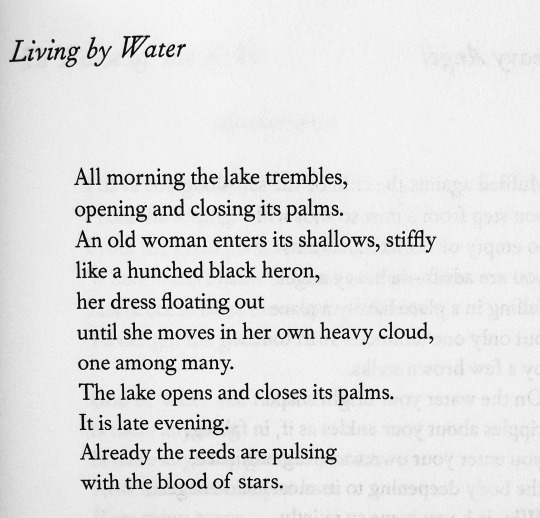
Peter Everwine
0 notes
Text
“I think there is a general misconception that you write poems because you “have something to say.” I think, actually, that you write poems because you have something echoing around in the bone-dome of your skull that you cannot say. Poetry allows us to hold many related tangential notions in very close orbit around each other at the same time. The “unsayable” thing at the center of the poem becomes visible to the poet and reader in the same way that dark matter becomes visible to the astrophysicist. You can’t see it, but by measure of its effect on the visible, it can become so precise a silhouette you can almost know it.”
— Rebecca Lindenberg, from Why Write Poetry? (via violentwavesofemotion)
18K notes
·
View notes
Photo

anne carson, plainwater: essays and poetry
277 notes
·
View notes
Photo

Sylvia Plath, from “The Moon and the Yew Tree,” Ariel
15K notes
·
View notes
Text
who else up thinking about outbreaks by kitchen mckeown
3K notes
·
View notes
Text

frankie bb, “Dream Child” from Spectra Poets
2 notes
·
View notes
Text
Once I wanted to be the greatest
No wind or waterfall could stall me
And then came the rush of the flood
Stars at night turned deep to dust
Cat Power, “The Greatest”
1 note
·
View note
Text

Gary Young
144 notes
·
View notes
Text
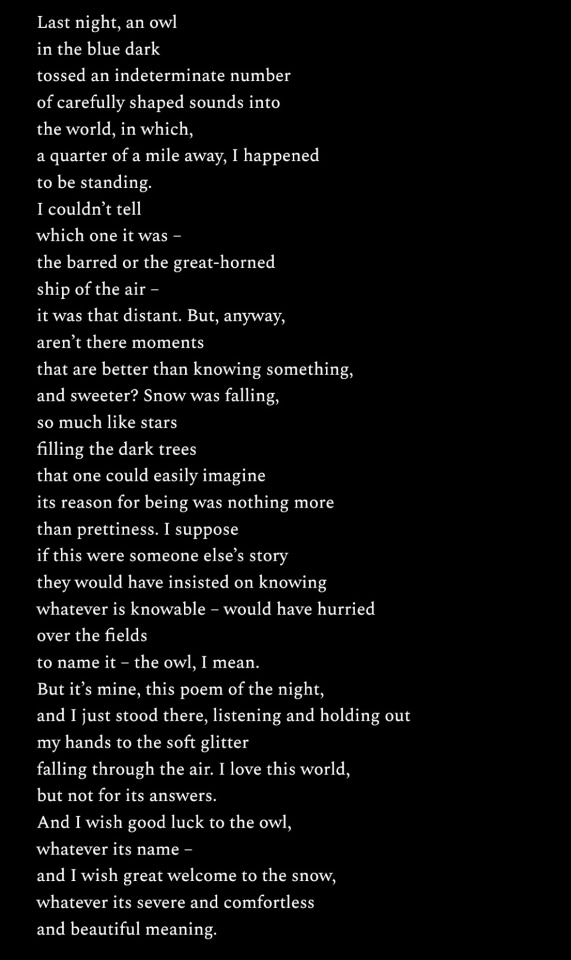
Mary Oliver, “Snowy Night”
#mary oliver#poetry#poem#literature#lit#writing#poet#quote#quotes#poets#poems#winter#winter solstice#solstice
59 notes
·
View notes
Text
Every time a poem is written, every time a short story is written, it is written not by cunning, but by belief. The beauty, the something, the little charm of the thing to be, is more felt than known.
Robert Frost
0 notes
